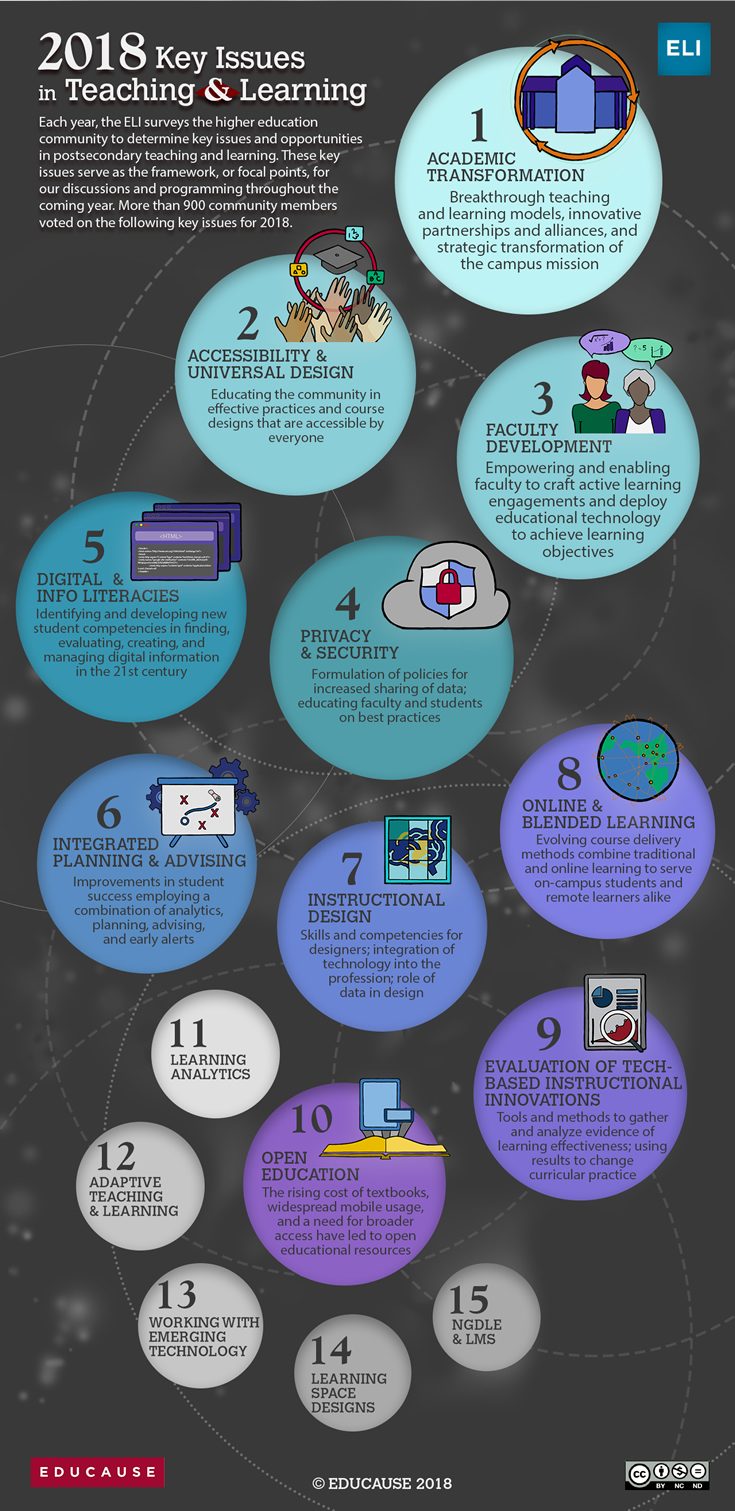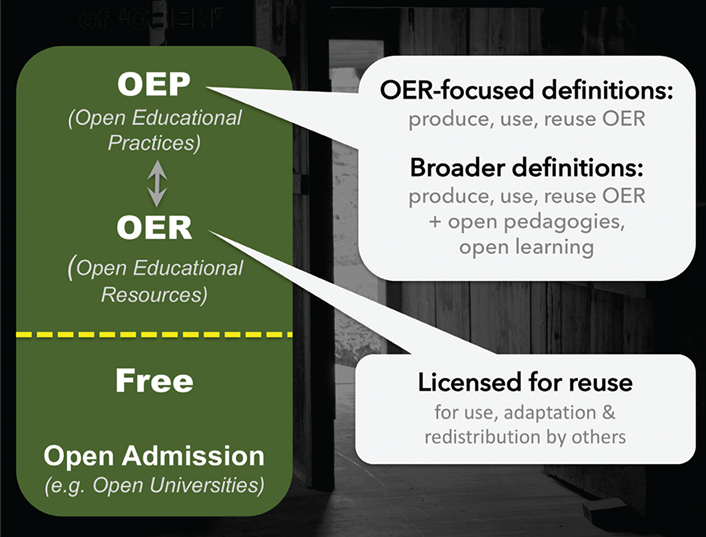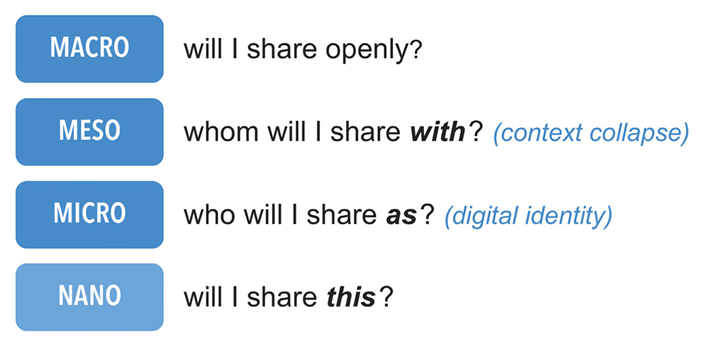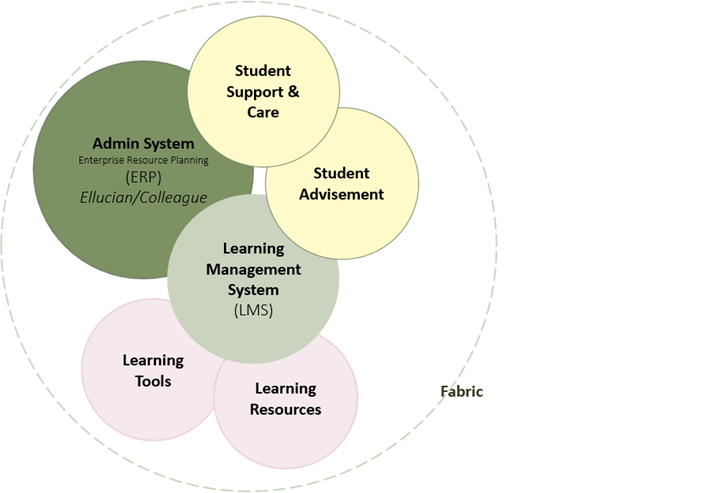Oct
2018
AI and VR for teaching learning
more on AI in this IMS blog
https://blog.stcloudstate.edu/ims?s=artificial+intelligence
more on VR in this IMS blog
Digital Literacy for St. Cloud State University
the International Society for Technology in Education to publish a book, titled Learning Transported: Augmented, Virtual and Mixed Reality for All Classrooms, to offer practical insights, lesson plans, and classroom examples so educators can make the most of these experiential worlds.
Definition
Augmented reality superimposes a digital layer on the world around us, often activated by scanning a trigger image or via GPS (think Pokemon Go!). Virtual reality takes users away from the real world, fully immersing students in a digital experience that replaces reality. Mixed reality takes augmented a step further by allowing the digital and real worlds to interact and the digital components to change based on the user’s environment.
Virtual Shapes
DEVICES: iOS, Android, Chromebook, PC, COURSE: Geometry, GRADES: 2-5, 60 minutes
Storytelling
DEVICES: iOS, Android, COURSE: English Language Arts, Speaking and Listening, GRADES: K-1
Augmented and Virtual Reality with EON
DEVICES: iOS, Android, COURSE: Earth and Space Science, GRADE: 4, 45 minutes
Scavenger Hunting as a Classroom Activity
The app offers teachers a unique way to create a scavenger hunt by designing AR messages and leaving them in specific places for students to “discover.”
Waypoint App
The Waypoint App also allows for creation of educational scavenger hunts using augmented reality. Educators can easily add questions that address lesson objectives, set specific locations where the questions are hidden, and then have students hunt for questions by following the map. The hunt is easily shared with students on a variety of platforms, including text messaging and email.
Breakout EDU
Breakout EDU has become a popular game in education. Driven by creativity, teamwork, and problem-solving, the game provides a fun learning experience as it challenges students to compete in solving puzzles. The game centers on a series of questions; each solved question unlocks the next part of the activity. Students work in groups, competing against other groups to open all the locks first.
https://www.educause.edu/eli/initiatives/key-issues-in-teaching-and-learning
A roster of results since 2011 is here.

https://cdn.nmc.org/media/2017-nmc-strategic-brief-digital-literacy-in-higher-education-II.pdf
Three Models of Digital Literacy: Universal, Creative, Literacy Across Disciplines
United States digital literacy frameworks tend to focus on educational policy details and personal empowerment, the latter encouraging learners to become more effective students, better creators, smarter information consumers, and more influential members of their community.
National policies are vitally important in European digital literacy work, unsurprising for a continent well populated with nation-states and struggling to redefine itself, while still trying to grow economies in the wake of the 2008 financial crisis and subsequent financial pressures
African digital literacy is more business-oriented.
Middle Eastern nations offer yet another variation, with a strong focus on media literacy. As with other regions, this can be a response to countries with strong state influence or control over local media. It can also represent a drive to produce more locally-sourced content, as opposed to consuming material from abroad, which may elicit criticism of neocolonialism or religious challenges.
p. 14 Digital literacy for Humanities: What does it mean to be digitally literate in history, literature, or philosophy? Creativity in these disciplines often involves textuality, given the large role writing plays in them, as, for example, in the Folger Shakespeare Library’s instructor’s guide. In the digital realm, this can include web-based writing through social media, along with the creation of multimedia projects through posters, presentations, and video. Information literacy remains a key part of digital literacy in the humanities. The digital humanities movement has not seen much connection with digital literacy, unfortunately, but their alignment seems likely, given the turn toward using digital technologies to explore humanities questions. That development could then foster a spread of other technologies and approaches to the rest of the humanities, including mapping, data visualization, text mining, web-based digital archives, and “distant reading” (working with very large bodies of texts). The digital humanities’ emphasis on making projects may also increase
Digital Literacy for Business: Digital literacy in this world is focused on manipulation of data, from spreadsheets to more advanced modeling software, leading up to degrees in management information systems. Management classes unsurprisingly focus on how to organize people working on and with digital tools.
Digital Literacy for Computer Science: Naturally, coding appears as a central competency within this discipline. Other aspects of the digital world feature prominently, including hardware and network architecture. Some courses housed within the computer science discipline offer a deeper examination of the impact of computing on society and politics, along with how to use digital tools. Media production plays a minor role here, beyond publications (posters, videos), as many institutions assign multimedia to other departments. Looking forward to a future when automation has become both more widespread and powerful, developing artificial intelligence projects will potentially play a role in computer science literacy.
In traditional instruction, students’ first contact with new ideas happens in class, usually through direct instruction from the professor; after exposure to the basics, students are turned out of the classroom to tackle the most difficult tasks in learning — those that involve application, analysis, synthesis, and creativity — in their individual spaces. Flipped learning reverses this, by moving first contact with new concepts to the individual space and using the newly-expanded time in class for students to pursue difficult, higher-level tasks together, with the instructor as a guide.
Let’s take a look at some of the myths about flipped learning and try to find the facts.
Myth: Flipped learning is predicated on recording videos for students to watch before class.
Fact: Flipped learning does not require video. Although many real-life implementations of flipped learning use video, there’s nothing that says video must be used. In fact, one of the earliest instances of flipped learning — Eric Mazur’s peer instruction concept, used in Harvard physics classes — uses no video but rather an online text outfitted with social annotation software. And one of the most successful public instances of flipped learning, an edX course on numerical methods designed by Lorena Barba of George Washington University, uses precisely one video. Video is simply not necessary for flipped learning, and many alternatives to video can lead to effective flipped learning environments [http://rtalbert.org/flipped-learning-without-video/].
Myth: Flipped learning replaces face-to-face teaching.
Fact: Flipped learning optimizes face-to-face teaching. Flipped learning may (but does not always) replace lectures in class, but this is not to say that it replaces teaching. Teaching and “telling” are not the same thing.
Myth: Flipped learning has no evidence to back up its effectiveness.
Fact: Flipped learning research is growing at an exponential pace and has been since at least 2014. That research — 131 peer-reviewed articles in the first half of 2017 alone — includes results from primary, secondary, and postsecondary education in nearly every discipline, most showing significant improvements in student learning, motivation, and critical thinking skills.
Myth: Flipped learning is a fad.
Fact: Flipped learning has been with us in the form defined here for nearly 20 years.
Myth: People have been doing flipped learning for centuries.
Fact: Flipped learning is not just a rebranding of old techniques. The basic concept of students doing individually active work to encounter new ideas that are then built upon in class is almost as old as the university itself. So flipped learning is, in a real sense, a modern means of returning higher education to its roots. Even so, flipped learning is different from these time-honored techniques.
Myth: Students and professors prefer lecture over flipped learning.
Fact: Students and professors embrace flipped learning once they understand the benefits. It’s true that professors often enjoy their lectures, and students often enjoy being lectured to. But the question is not who “enjoys” what, but rather what helps students learn the best.They know what the research says about the effectiveness of active learning
Assertion: Flipped learning provides a platform for implementing active learning in a way that works powerfully for students.

What is the total cost of my innovation, including both new spending and the use of existing resources?
What’s the unit I should measure that connects cost with a change in performance?
How might the expected change in student performance also support a more sustainable financial model?
The Exposure Approach: we don’t provide a way for participants to determine if they learned anything new or now have the confidence or competence to apply what they learned.
The Exemplar Approach: from ‘show and tell’ for adults to show, tell, do and learn.
The Tutorial Approach: Getting a group that can meet at the same time and place can be challenging. That is why many faculty report a preference for self-paced professional development.build in simple self-assessment checks. We can add prompts that invite people to engage in some sort of follow up activity with a colleague. We can also add an elective option for faculty in a tutorial to actually create or do something with what they learned and then submit it for direct or narrative feedback.
The Course Approach: a non-credit format, these have the benefits of a more structured and lengthy learning experience, even if they are just three to five-week short courses that meet online or in-person once every week or two.involve badges, portfolios, peer assessment, self-assessment, or one-on-one feedback from a facilitator
The Academy Approach: like the course approach, is one that tends to be a deeper and more extended experience. People might gather in a cohort over a year or longer.Assessment through coaching and mentoring, the use of portfolios, peer feedback and much more can be easily incorporated to add a rich assessment element to such longer-term professional development programs.
The Mentoring Approach: The mentors often don’t set specific learning goals with the mentee. Instead, it is often a set of structured meetings, but also someone to whom mentees can turn with questions and tips along the way.
The Coaching Approach: A mentor tends to be a broader type of relationship with a person.A coaching relationship tends to be more focused upon specific goals, tasks or outcomes.
The Peer Approach:This can be done on a 1:1 basis or in small groups, where those who are teaching the same courses are able to compare notes on curricula and teaching models. They might give each other feedback on how to teach certain concepts, how to write syllabi, how to handle certain teaching and learning challenges, and much more. Faculty might sit in on each other’s courses, observe, and give feedback afterward.
The Self-Directed Approach:a self-assessment strategy such as setting goals and creating simple checklists and rubrics to monitor our progress. Or, we invite feedback from colleagues, often in a narrative and/or informal format. We might also create a portfolio of our work, or engage in some sort of learning journal that documents our thoughts, experiments, experiences, and learning along the way.
The Buffet Approach:



In 2014, administrators at Central Piedmont Community College (CPCC) in Charlotte, North Carolina, began talks with members of the North Carolina State Board of Community Colleges and North Carolina Community College System (NCCCS) leadership about starting a CBE program.
Building on an existing project at CPCC for identifying the elements of a digital learning environment (DLE), which was itself influenced by the EDUCAUSE publication The Next Generation Digital Learning Environment: A Report on Research,1 the committee reached consensus on a DLE concept and a shared lexicon: the “Digital Learning Environment Operational Definitions,

|
|
The Future Trends Forum welcomes
Anant Agarwal , the founder and CEO of edX, a non-profit venture created by Harvard University and the Massachusetts Institute of Technology, focused on transforming online and on-campus learning through groundbreaking methodologies.
He aims to help bring quality education to everyone, everywhere. Anant has also been a Professor of Electrical Engineering and Computer Science at MIT for 30 years.
|
+++++++++++++
more on MOOC in this IMS blog
https://blog.stcloudstate.edu/ims?s=mooc
https://www.ets.org/Media/Products/perceptions.pdf
https://link.springer.com/chapter/10.1007%2F978-3-319-47283-6_6
investigate behavioral and psychological metrics that could affect learner perceptions of technology
today’s learners spend extensive time and effort posting and commenting in social media and playing video games
Creating pleasurable learning experiences for learners can improve learner engagement.
uses game-design elements in non-gaming environments with the purpose of motivating users to behave in a certain direction (Deterding et al., 2011)
How can we facilitate the gamefulness of gamification?
Most gamified activities include three basic parts: “goal-focused activity, reward mechanisms, and progress tracking” (Glover, 2013, p. 2000).
gamification works similarly to the instructional methods in education – clear learning and teaching objectives, meaningful learning activities, and assessment methods that are aligned with the objectives
the design of seven game elements:
Dominguez et al. (2013) suggested that gamification fosters high-order thinking, such as problem-solving skills, rather than factual knowledge. Critical thinking, which is commonly assessed in social science majors, is also a form of higher-order thinking.
Davis (1989) developed technology acceptance model (TAM) to help people understand how users perceive technologies. Pleasure, arousal, and dominance (PAD) emotional-state model that developed by Mehrabian (1995) is one of the fundamental design frameworks for scale development in understanding user perceptions of user-system interactions.
Van der Heijdedn (2004) asserted that pleasurable experiences encouraged users to use the system for a longer period of time
Self-determination theory (Deci & Ryan, 1985) has been integrated into the design of gamification and addressed the balance between learners’ extrinsic and intrinsic motivation.
Storytelling in the subscale of Preferences for Instruction emphasizes the rules of the gamified learning environments, such as the syllabus of the course, the rubrics for the assignments, and the directions for tasks. Storytelling in the subscale of Preferences for Instructors’ Teaching Style focuses on the ways in which instructors present the content. For example, instructors could use multimedia resources to present their instructional materials. Storytelling in the subscale of Preferences for Learning Effectiveness emphasizes scaffolding materials for the learners, such as providing background information for newly introduced topics.
The effective use of badges would include three main elements: signifier, completion logic, and rewards (Hamari & Eranti, 2011). A useful badge needs clear goal-setting and prompt feedback. Therefore, badges correlate closely with the design of storytelling (rules) and feedback, which are the key game design elements in the subscale of Preferences for Instruction.
Students can use Google to search on their laptops or tablets in class when instructors introduce new concepts. By reading the reviews and viewing the numbers of “thumbs-up” (agreements by other users), students are able to select the best answers. Today’s learners also “tweet” on social media to share educational videos and news with their classmates and instructors. Well-designed gamified learning environments could increase pleasure in learning by allowing students to use familiar computing experiences in learning environments.
http://www.cast.org/whats-new/events/2018/07/4th-annual-udl-symposium.html
This year’s UDL Symposium was an opportunity to come together as a community to explore the promise of Universal Design for Learning for empowering learners. By engaging in sessions designed to encourage critical conversations, problem-solving, and hands-on exploration, participants considered empowerment through a UDL lens. Participants left with a deeper understanding of the important role empowerment plays in learning and with concrete examples of ways to leverage UDL for these critical aims.We hope our participants left with the confidence and the motivation to apply their learning to their practice—and with a new network of colleagues to encourage and support their efforts.
below is the link and phone numbers for the September 21st webinar, “Student Device Preferences for Online Course Access and Multimedia Learning.”
Remember, you don’t have to register in advance. Simply join the presentation by clicking on the below link or dialing the relevant number. The webinar begins at 11am ET (UTC -5) on the 21st.
We’ll post a recording of the session here in Canvas after the fact.
Thank you.
Join from a PC, Mac, iPad, iPhone or Android device:
Please click this URL to join. https://arizona.zoom.us/j/506967668
40 virtual reality headsets with haptic handsets for them to manipulate in the VR/AR space, and I connected them to content from New York Times VR and WITHIN. The content placed students in settings such as on the ground in a refugee crisis or in the midst of the Millions March in New York City.
At the beginning of every class, they would go into this virtual space and engage with the content instead of just reading it. They’d respond to me about what it was like to be immersed in the experience.
The content from the WITHIN app provided one of the more visceral experiences for students.
At the end of the course, for example, students met with a shark tank-type group—investors from the community, business, and industry folks—and pitched them business ideas that would utilize VR to provide a solution to problems that were local, regional, national or even global in scope.
Were you able to measure this success?
The way that I measured it was completion. How many of my students actually got through my class successfully? It was over 85%. My research from the two classes where I used VR and this approach shows students were engaged, and ultimately more successful in my classes.
zSpace https://info.zspace.com/2018-vived-allied-health-promo
Also:
Haptics provide a critical role in making our devices more interactive.
https://www.iotforall.com/intro-to-haptic-technology-tachammer-haptic-actuator/
1. Eccentric Rotating Mass (ERM)
2. Linear Resonant Actuator (LRA)
3. Piezoelectric Actuators
4. Forced Impact (Accelerated Ram)
+++++++++++
more on VR in this IMS blog
https://blog.stcloudstate.edu/ims?s=virtual+reality
Since the Open University was founded in 1984, more than 250,000 students have enrolled in courses. The Open University offers courses of study at the bachelor’s and master’s degree levels in cultural studies, education science, law, management, psychology, science and technology. Five of its master’s degree programs were top-ranked in 2017
4CID ID Model https://edutechwiki.unige.ch/en/4C-ID
http://www.nwlink.com/~donclark/hrd/learning/id/4c_id.html
++++++++++
more on open education in this IMS blog
https://blog.stcloudstate.edu/ims?s=open+education
Gamification in Learning: 34 Top Tips That Work For the Modern Learner
a tour of the Academy LMS, the world’s #1 gamified learning management system
++++++++++++
more on online learning in this IMS blog
https://blog.stcloudstate.edu/ims?s=online+learning